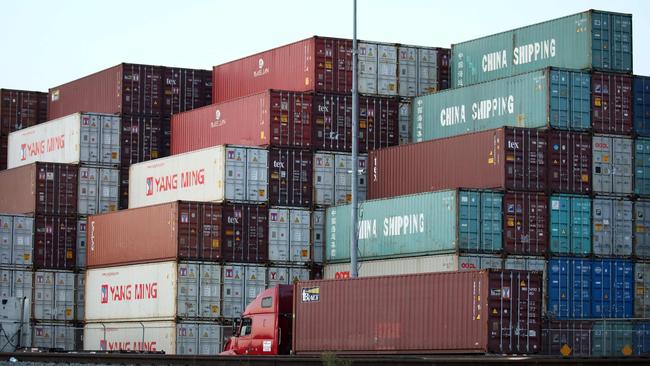Agreement lays stong groundwork
The new US-Mexico-Canada Agreement could prove a valuable and versatile template for other trade deals.

The Trump administration may have created a model for future trade agreements in striking a deal last week with Canada and Mexico to rewrite the 25-year-old North American Free Trade Agreement.
The new US-Mexico-Canada Agreement (USMCA) includes provisions with implications for agreements beyond the US, including new bilateral deals being contemplated for China, Japan, the European Union, and the UK after it exits the European bloc.
“We always thought this was a template of a trade agreement,” said Lawrence Kudlow, the director of the White House National Economic Council. “And it’s going to be a very pro-growth template.”
The House of Representatives is expected to approve the deal in the coming week, followed by the Senate early next year, sending the agreement to the president’s desk.
Here are provisions that could be starting points for the Trump administration’s negotiations with other countries, as well as provisions unique to the USMCA.
Labour
US employers have seen cheap labour in developing countries as a chance to ship jobs overseas.
As a result, US unions and their congressional allies often opposed trade deals with such countries.
The USMCA won support of congressional Democrats through new rules boosting labour protections in Mexico, incentivising higher wages and allowing independent unions. It also creates a system of labour panellists that will monitor whether Mexico is living up to the deal.
As such, the deal may serve as a new model for striking deals with countries that have cheaper wages or lower labour standards.
Digital services
The USMCA contains a detailed section on trade in digital services, a chapter that many trade experts have held up as an obvious improvement over the original NAFTA, which hadn’t contemplated the impact of the internet.
The deal prohibits tariffs on digital products, requires anti-spam laws, allows companies to protect proprietary software and includes copyright protections for electronic intellectual property, provisions that are similar to those previously negotiated in the Trans-Pacific Partnership, the trade bloc of 11 countries around the Pacific Ocean including Mexico and Canada.
The USMCA provisions in these areas were “portable” to other trade deals, said Shannon O’Neil, a senior fellow for Latin American studies at the Council on Foreign Relations.
Currency
The USMCA contains a chapter on currency manipulation, which the administration has touted as the first of its kind.
The deal forces the signatory countries to disclose government foreign-exchange transactions and could lead to penalties for a failure to do so.
Canada and Mexico put up little resistance to such currency provisions — neither country is seen as manipulating their currency for trade, and already disclose currency transactions. The chapter would also pose no major problem in negotiations with the EU or the UK, which already abide by the practices of the chapter.
But the US has been using the USMCA currency chapter as a model for its negotiations with China, and officials say a currency agreement is part of the phase-one trade deal reached with China on Friday, although the full text of that agreement hasn’t yet been published. In the past, Japan has frequently been accused of distorting its currency as well, and so Washington would also like to see Tokyo accept a similar chapter.
Non-market economies
The USMCA includes a provision blocking its members from making certain kinds of deals with other countries that are seen as distorting their domestic markets in favour of their own businesses.
China subsidises its state-owned businesses, giving them what the US sees as an unfair advantage on global markets. This USMCA provision seeks to thwart China’s ability to leverage that advantage in the US market — and hurt US companies and workers — by establishing a foothold in either Mexico and Canada, and using that foothold to do business in the US
The USMCA not only expands the definition of a state-owned businesses to include those with a minority government stake, but also requires a USMCA member to disclose any deal it might try to reach with China or other “nonmarket economies” that subsidise their actors.
The non-market economy provisions are important for any possible deal with the UK. London has said it would like to strike deals with both the US and China after it completes its exit from the EU. But if the US pursued a non-market economy clause in a deal with the UK, it would make it difficult for the UK to sign a free-trade agreement with Beijing.
Rules of Origin
One provision that will be hard to include in other trade agreements is Rules of Origin. This chapter of the USMCA requires cars to have 75 per cent of their content come from within North America. Such rules are idiosyncratic to the US market and might not have applicability elsewhere.
Another surprising last-minute change to the USMCA was a reduction in the number of years that drug makers can be protected from competition from a new drug, something that Democratic politicians in the US pushed hard to include.
The deal dropped language that would have granted drug companies 10 years during which they are protected from competition from generic drug makers with cheaper alternatives. Other trade deals are likely to address this issue on a case-by-case basis.



To join the conversation, please log in. Don't have an account? Register
Join the conversation, you are commenting as Logout